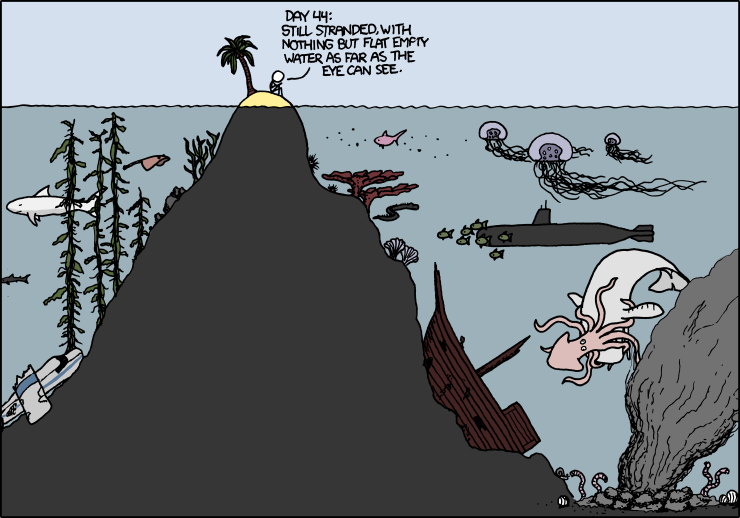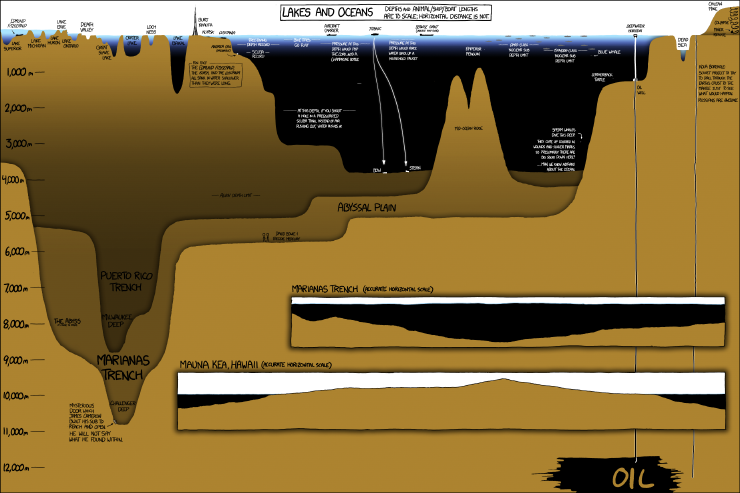By Dawn Barlow, MSc student, OSU Department of Fisheries and Wildlife, Geospatial Ecology of Marine Megafauna Lab
I was fortunate enough to spend the Austral summer in the field, and so while the winter rain poured down on Oregon I found myself on the water with the sun and wind on my face, looking for blue whales in New Zealand. This spring I switched gears and spent time taking courses to build my analytical toolbox. In a course on technical writing and communication, I was challenged to present my research using only pictures and words with no written text, and to succinctly summarize the importance of my research in an introduction to a technical paper. I attended weekly seminars to learn about the diverse array of marine science being conducted at Oregon State University and beyond. I also took a course entitled “Advanced Spatial Statistics and Geographic Information Science”. In this skill-building course, we were given the opportunity to work with our own data. Even though my primary objective was to expand the tools in my toolbox, I was excited to explore preliminary results and possible insight into blue whale habitat selection in my study area, the South Taranaki Bight region (STB) of New Zealand (Figure 1).

Despite the recent documentation of a foraging ground in the STB, blue whale distribution remains poorly understood in New Zealand. The STB is New Zealand’s most industrially active marine region, and the site of active oil and gas extraction and exploration, busy shipping traffic, and proposed seabed mining. This potential space-use conflict between endangered whales and industry warrants further investigation into the spatial and temporal extent of blue whale habitat in the region. One of my research objectives is to investigate the relationship between blue whales and their environment, and ultimately to build a model that can predict blue whale presence based on physical and biological oceanographic features. For this spring term, the question I asked was:
Is the number of blue whales present in an area correlated with remotely-sensed sea surface temperature and chlorophyll-a concentration?
For the purposes of this exploration, I used data from our 2017 survey of the STB. This meant importing our ship’s track and our blue whale sighting locations into ArcGIS, so that the data went from looking like this:
… to this:
The next step was to get remote-sensed images for sea surface temperature (SST) and chlorophyll-a (chl-a) concentration. I downloaded monthly averages from the NASA Moderate Resolution Imaging Spectrometer (MODIS aqua) website for the month of February 2017 at 4 km2 resolution, when our survey took place. Now, my images looked something more like this:
But, I can’t say anything reliable about the relationships between blue whales and their environment in the places we did not survey. So next I extracted just the portions of my remote-sensed images where we conducted survey effort. Now my maps looked more like this one:
The above map shows SST along our ship’s track, and the locations where we found whales. Just looking at this plot, it seems like the blue whales were observed in both warmer and colder waters, not exclusively in one or the other. There is a productive plume of cold, upwelled water in the STB that is generated off of Kahurangi point and curves around Farewell Spit and into the bight (Figure 1). Most of the whales we saw appear to be near that plume. But how can I find the edges of this upwelled plume? Well, I can look at the amount of change in SST and chl-a across a spatial area. The places where warm and cold water meet can be found by assessing the amount of variability—the standard deviation—in the temperature of the water. In ArcGIS, I calculated the deviation in SST and chl-a concentration across the surrounding 20 km2 for each 4 km2 cell.
Now, how do I tie all of these qualitative visual assessments together to produce a quantitative result? With a statistical model! This next step gives me the opportunity to flex some other analytical muscles, and practice using another computational tool: R. I used a generalized additive model (GAM) to investigate the relationships between the number of blue whales observed in each 4 km2 cell our ship surveyed and the remote-sensed variables. The model can be written like this:
Number of blue whales ~ SST + chl-a + sd(SST) + sd(chl-a)
In other words, are SST, chl-a concentration, deviation in SST, and deviation in chl-a concentration correlated with the number of blue whales observed within each 4 km2 cell on my map?
This model found that the most important predictor was the deviation in SST. In other words, these New Zealand blue whales may be seeking the edges of the upwelling plume, honing in on places where warm and cold water meet. Thinking back on the time I spent in the field, we often saw feeding blue whales diving along lines of mixing water masses where the water column was filled with aggregations of krill, blue whale prey. Studies of marine mammals in other parts of the world have also found that eddies and oceanic fronts—edges between warm and cold water masses—are important habitat features where productivity is increased due to mixing of water masses. The same may be true for these New Zealand blue whales.
These preliminary findings emphasize the benefit of having both presence and absence data. The analysis I have presented here is certainly strengthened by having environmental measurements for locations where we did not see whales. This is comforting, considering the feelings of impatience generated by days on the water spent like this with no whales to be seen:
Moving forward, I will include the blue whale sighting data from our 2014 and 2016 surveys as well. As I think about what would make this model more robust, it would be interesting to see if the patterns become clearer when I incorporate behavior into the model—if I look at whales that are foraging and traveling separately, are the results different? I hope to explore the importance of the upwelling plume in more detail—does the distance from the edge of the upwelling plume matter? And finally, I want to adjust the spatial and temporal scales of my analysis—do patterns shift or become clearer if I don’t use monthly averages, or if I change the grid cell sizes on my maps?
I feel more confident in my growing toolbox, and look forward to improving this model in the coming months! Stay tuned.





































































You must be logged in to post a comment.